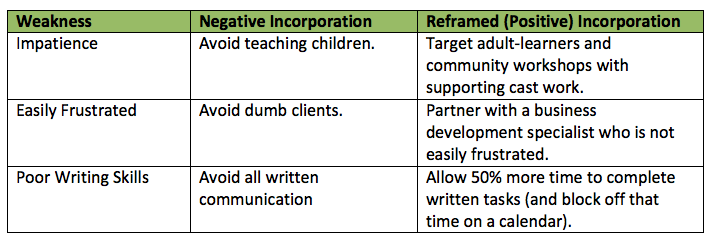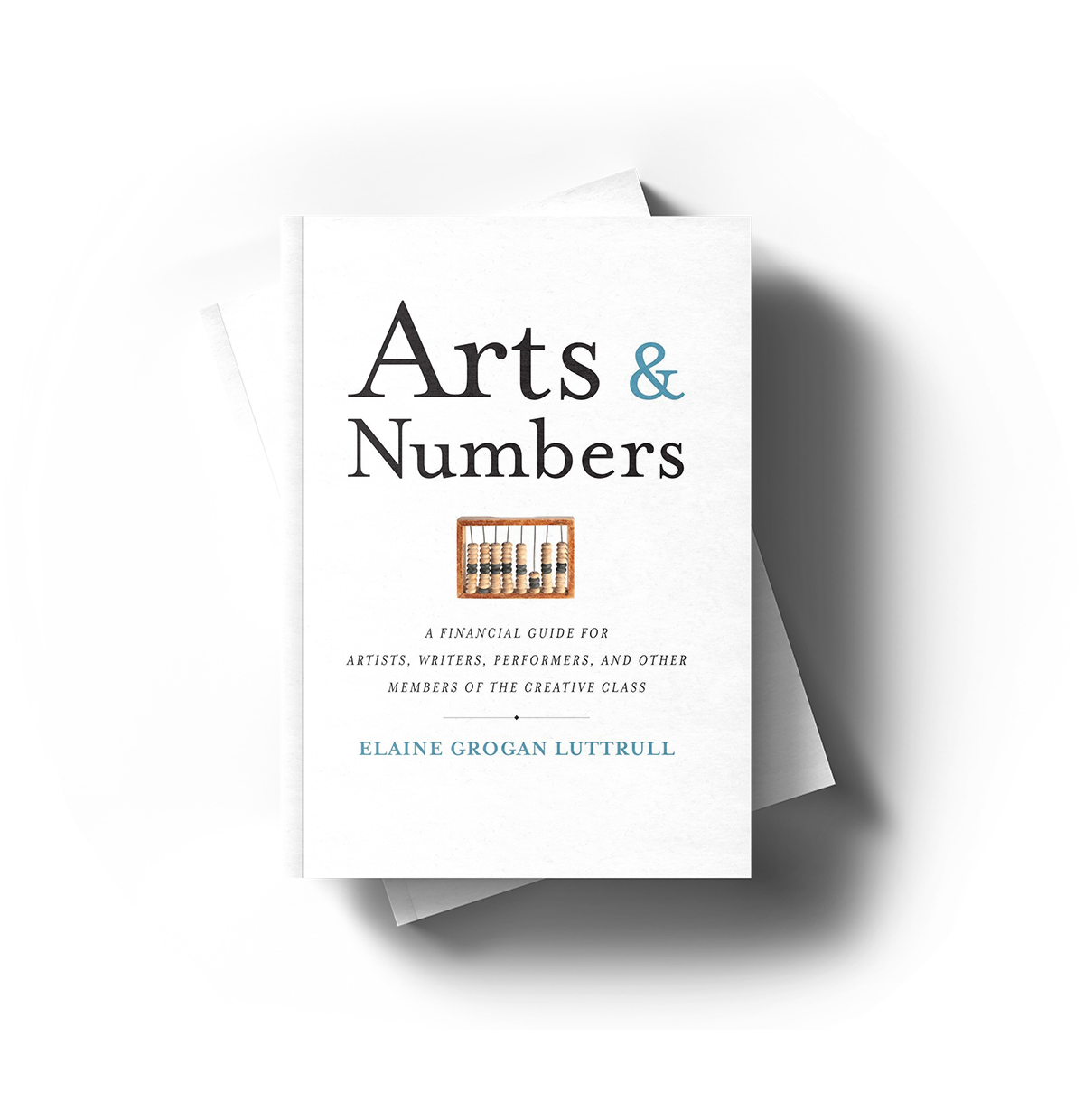September 19, 2016 • Curriculum

Dublin, Ohio
Sometimes knowing what you don’t do is even more important than knowing what you do. Articulating what we don’t do can save endless hours of metaphorical torture. Engaging in a bit of reflective SWOT analysis can help a creative individual decide when an opportunity is worth pursuing… And when it definitely is not.
SWOT analysis is a market research acronym meant to help companies identify their place within an industry and protect against external industry threats (a new competitor, a new technology, natural disaster, etc.). But it works for individuals as well.
Let’s start with the fun part: Strengths (S). What are your strengths? What do you do really well? What distinguishes you from your peers?
We’ll come back to the answer to this question frequently. Your strengths (or your competencies, or your unique value proposition) informs your pricing structure, the way you describe your work, and – above all else – the opportunities you choose to pursue as part of your creative career.
In articulating your own strengths, don’t be afraid to put them in writing and live with them for a bit. (We favor post-it notes listing core competencies, but really any system will work.) Asking a trusted peer or mentor for input can help as well. Borrowing someone else’s adjectives to describe what we do and how we do it can yield insights we might miss on our own.
After listing your strengths, think about what you omitted from the list: Weaknesses (W). What are your weaknesses? These can be weaknesses you hope to improve upon or those you simply embrace. Weaknesses aren’t bad. They are a realistic assessment of where you are – and are note—willing and able to deliver the most value to the world. What is the part about a project you always dread? What is the last professional project that made you cringe? What is your least favorite part of your process or your work? What do you secretly fear someone will ask you to do?
Articulating weaknesses is an important part of honing your creative career. As you examine each one, identify the weaknesses you want to improve upon, and include them as part of your goal-setting process. (Don’t forget to quantify the process of improving each one!)
Then, identify the ones you want to embrace, and articulate how you will incorporate each one within your creative career. There’s a good chance the first thing you articulate will be fairly negative. (And that’s okay.) If it is, work on reframing it as a positive part of your strategy, rather than a negative one.

By focusing on your strengths and incorporating a plan to address or embrace your weaknesses into your overall creative career, it will become easier to decide whether or not to accept an opportunity.
And by the way, that’s the next part of the SWOT analysis: Opportunity (O). Unlike strengths and weaknesses, opportunities are external. That is, they exist outside of us. We can choose whether or not to pursue opportunities that may arise based on how those opportunities complement our strengths and weaknesses.
Sometimes we are tempted to say yes to every opportunity that arises, simply because saying yes is considerably less scary than saying no. And early on in a creative career, you should always say yes more often than you say no. Without a bit of experience under your proverbial belt, it is next to impossible to really articulate strengths and weaknesses.
But at some point that changes, and a bit of opportunity editing becomes crucial to growing a creative career in the most advantageous way. (I wish there were a perfect way to identify that point within a creative career. There isn’t. I’m sorry.) But once you’re at that point, you’ll know. In fact, you’ll probably figure it out one opportunity too late. That is, you’ll find yourself completing a project that all of a sudden doesn’t make sense for you any more. And you’ll use that knowledge to edit the next opportunity a bit better. And the one after that. And the one after that.
The last part of a SWOT analysis is the least fun of all: Threats (T). Threats are risks to our businesses and creativity that are often outside of our control. For some creative individuals, these are industry-level threats. (Think about wedding photographers who compete with all guests who have smart phones, fine artists whose customers compare their work to the output of “Wine and Canvas” events at bars and restaurants, and writers who compete with, well, anyone with a blog.)
As with any negative externalities, the strategy for dealing with threats is two-fold. First we acknowledge the threat (and we honestly assess its potential impact on our creativity). Then we deal with it, either by highlighting the ways our strengths distinguish us from threats, or by enhancing our weaknesses to better combat the threat.
But in all cases, by focusing on what we can control instead of what is beyond our control, we’ll be better able to respond to the changing world. That’s why we start by articulating Strengths and Weaknesses. As long as we’re clear about who we are and what we do well, we’ll be just fine.
Now What?
Want to learn more about aligning your strengths with opportunities? Check out Goal Setting for Portfolio Careers, a 3-hour self-study course to put these theories into creative action.
 Goal Setting for Portfolio Careers
Goal Setting for Portfolio Careers
You probably have a goal: To keep doing exactly what you want to be doing without going broke. But what if you could do more? In this course, you’ll learn why the traits that enhance your creativity are also fantastic for building tools to make your creative career work for you.
This course is completely self-paced, meaning you can read the materials and do the activities on your own time. But don’t worry. You won’t be alone.
At Minerva Financial Arts, we care about artists and the community… A lot. All our courses are distinguished from others by Elaine’s hands-on, supportive approach to coaching you through the material. Enjoy!


